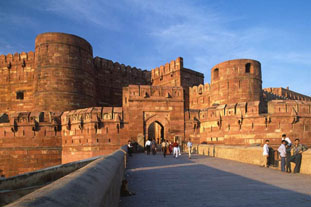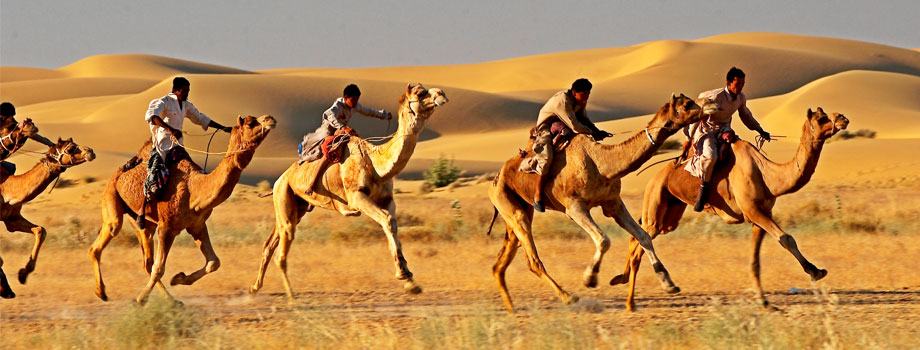-
Wild LIfe in India
India is home to many National parks and Wildlife sancturies within d Read more -
Kerla
With the Arabian Sea in the west, the Western Ghats towering 500-2700 m in Read more -
Taj Mahal
The Taj Mahal is one of the most wonderful tourism destinations in India an Read more -
Varanasi
The land of Varanasi (Kashi) has been the ultimate pilgrimage spot for Hind Read more -
Jaisalmer
The History of Jaisalmer has a charm of its own. Like all other cities of R Read more -
Amber Fort
Established in the year 2005, at JAIPUR (RAJASTHAN, India) we, "SHOW Read more
BIKANER
 Late in the 15th century, Rao Bikaji, the son of Rao Jodhaji of Jodhpur, took offence at one of his father’s comments and left home to set up his own kingdom in the deserts of the north. Encouraged by the prophecy of a mystic woman, Karni Mata, that he would rule over a kingdom larger that his father’s, he set up a fortified city in 1488, a city which came to be called Bikaner.
Late in the 15th century, Rao Bikaji, the son of Rao Jodhaji of Jodhpur, took offence at one of his father’s comments and left home to set up his own kingdom in the deserts of the north. Encouraged by the prophecy of a mystic woman, Karni Mata, that he would rule over a kingdom larger that his father’s, he set up a fortified city in 1488, a city which came to be called Bikaner.A sightseeing tour in Bikaner is all about visiting various forts. The Junagarh Fort lies to the northeast of the walled old city of Bikaner. Raja Rai Singh, a general in Akbar’s army built the fort in 1593 for the Mughal Army, and its most unusual feature is that this fort was built at ground level and not on high ground. Interestingly, it is one of the few forts in India that was never conquered - maybe its inconspicuousness proved to be it's best defence!
Suraj Pol or Sun Gate is the main entrance to the Junagarh Fort. The fort is encircled by a moat that protects the splendid complex of thirty-seven palaces, pavilions and temples added by different rulers, the last one, as recently as 1943. Their lavishly adorned interiors are much better preserved than those in any other palace in the region.
The other interesting place to see is the Lal Garh Palace is an architectural masterpiece in red sandstone, typical of the area. This palace was built by the greatest of Bikaner kings, Maharaja Ganga Singh in the memory of his father Maharaja Lal Singh.
The palace has beautiful latticework and filigree work in sandstone that closely resembles lacy confections in its intricacy. Well laid out gardens, sprawling lawns on which peacocks dance and play amidst a riot of colourful bougainvillea make it a delight for the eyes. Part of the palace has been converted into a luxury hotel and a museum.
The Ganga Golden Jubilee Museum is the best amongst the many royal museums in Rajasthan. Its reputation has been enhanced by its rare collection of terra-cotta ware, weapons, miniature paintings from the Bikaner School and coins. Most of the exhibits are masterpieces of Harappan civilization obtained from the archaeological excavations in the vicinity, as well as some from the Gupta and Kushan periods.
The temple of Karni Devi is the most important one in Bikaner as it is dedicated to the family deity of the royal house of Bikaner. The Bhandeshwar and Sandeshwar Jain Temples are dedicated to the 23rd Jain Tirthankara, Parsavnathji. Built in the 16th century by two brothers whose names they bear, these temples are remarkable for their colourful murals and the prolific use of gold leaf and mirrors, a rare feature in the Jain temples of Rajasthan.
The other important temples here are the Laxminathji, Nagnechiji and Shiv Bari temples. The Rampuria Haveli and the Kothari Haveli (manor) in the old city are among the most impressive for their ornately carved ‘jalis’ (screen) and balconies.





